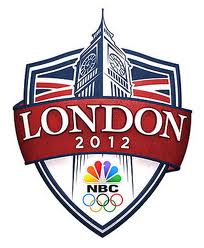 A new UNC study claims that NBC airs fewer women’s Olympic events than men’s events in prime time and that almost all of the women’s coverage is confined to a few specific sports the researchers term “socially acceptable,” including swimming and gymnastics. Considering that probably 99 of 100 people would answer “men” if asked which gender do you think of first when you hear the word “sports,” women getting more than 46 percent of the coverage, as they did in 2008, isn’t bad.
A new UNC study claims that NBC airs fewer women’s Olympic events than men’s events in prime time and that almost all of the women’s coverage is confined to a few specific sports the researchers term “socially acceptable,” including swimming and gymnastics. Considering that probably 99 of 100 people would answer “men” if asked which gender do you think of first when you hear the word “sports,” women getting more than 46 percent of the coverage, as they did in 2008, isn’t bad.
After reading the report, one veteran journalist wrote, “(NBC’s) decisions suggest we love our women athletes, but only when they’re showing a lot of skin, and/or participating in sports our society considers acceptably feminine.” With all the free options on the Internet to see women in various stages of dress and physical activity, I doubt men are tuning in to the Olympics simply to see some skin. Also, more women watch the Olympics than men.
“It seems that women are accepted as athletes only if they continue to look and act as women are expected to look and act,” the researchers wrote. While the length of the games might hinder their prime time broadcast, the rough-and-tumble sport of women’s soccer is a popular Olympic event where women are accepted as athletes. One national sports reporter for CBS Sports even predicts that the women’s soccer final will be the most-watched team game of the Olympics in the U.S.
Further, the report says, “In 2008, female representation grew to 48% of the U.S. team, and yet coverage of women’s events fell to 46.3%. This is in contrast to previous years, when coverage exceeded participation for women. In Athens in 2004, for example, women made up 40.7% of the U.S. team, yet received 47.9% of airtime.”
So, it’s ok for women to get seven percent more airtime than their participation percentage would suggest, but not 1.7 percent less?
Nothing against the researchers’ efforts but it could ultimately be that, regardless of attire or femininity, people would simply rather watch gymnastics, swimming and track than cycling, fencing and rowing. To view the entire study, please click here – http://enx.sagepub.com/content/6/2/51.full.